By Dorothy Davis, Bulletin 6/2024, August
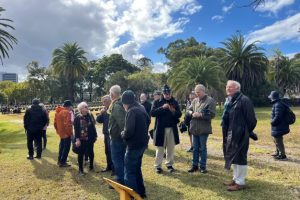
A busload of Glebe Society members departed the Old Fire Station on 3 July in high spirits for a visit to burial sites and the spirits of the departed at Rookwood Cemetery. The weather was kind and there was only one occasion when we had to run for shelter from a heavy shower.
Max Solling led us through some of the many different sections of the Cemetery, on overgrown pathways, around monuments and graves, past the Serpentine drain and along trails through woodlands, constantly pointing out monuments, headstones and inscriptions of interest. We visited first the Presbyterian section, and were impressed by the largest single monument in Rookwood, the Frazer Mausoleum, a distinctive example of a Victorian funerary monument, completed in 1894, and the resting place of the family of Irish immigrant John Frazer, merchant and philanthropist. And after some searching, we found the burial site of the controversial John Dunmore Lang, first Presbyterian clergyman to come to Australia.
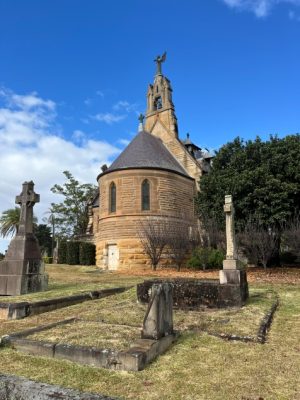
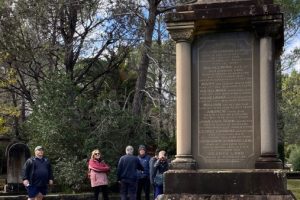
In the adjoining Wesleyan section rest its leading layman George Allen and family of Toxteth Park, Glebe and the missionary William Boyce. Dominating the Roman Catholic section is the Gothic Revival St Michael’s Chapel, built of Pyrmont sandstone, as well as the tall Celtic cross carved in Carrara marble Nearby are monuments to Irish-born brewers John and James Toohey. Of note, in the Anglican section are the retail merchants, the Hordern family. Samuel is buried near father Anthony. Samuel Hordern left an estate of £3 million pounds in 1909, the largest estate in Australia up to that time. (PHOTO)
In another part of the Cemetery, the gravestones provide evidence of the influx of European migrants who brought their traditional burial customs to their new country. Russian Orthodox, Greek Orthodox, Ukrainian Orthodox, Estonians, Latvians, Assyrians, Muslims and others have made a distinctive impact. A large number of Chinese are also buried at Rookwood, with their section marked by an oriental-style building in bright red and green.
I’ve mentioned only a handful of the monuments and graves pointed out by Max as we wandered through the parkland setting of the Cemetery among exotic palms and cypresses, rose bushes, and native Australian trees. Many epitaphs tell a story … and Max was delighted to draw our attention to the humorous as well as the sad and heart-breaking, or to tell his own stories of deeds and misdeeds of those buried there.
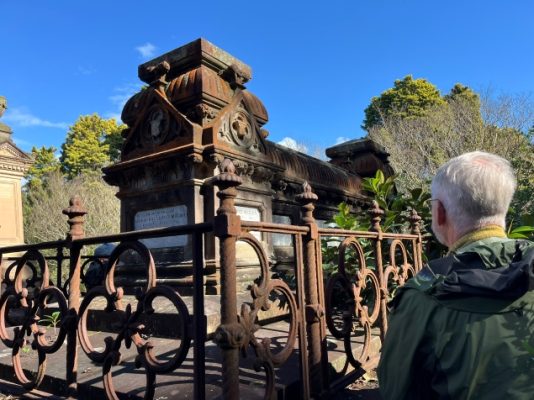
I can best describe the day as a fascinating ramble across a site of nearly 800 acres, re-discovering Australian history since the mid-1860s and recognising many names, among them clergymen, colonial landowners, politicians, retailers, manufacturers, brewers, artists, artisans and folk heroes. Rookwood Cemetery is a huge, sprawling place and we needed the expert knowledge of Max, helped by our patient, volunteer bus driver Glen (Glebe Society Management Committee member), to find our way around. We also appreciated the extensive notes provided by Max. Thanks too to Duncan who suggested and organised this interesting excursion.
‘Rookwood Cemetery and Back’: we made our way back home with no-one left behind!!
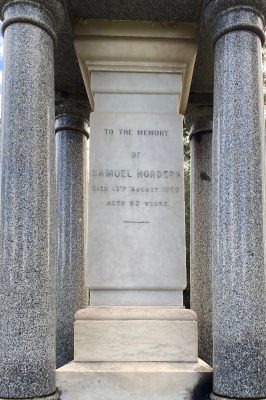
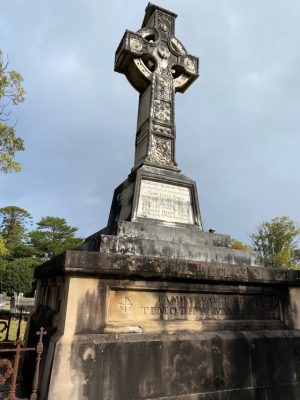








Join the conversation on Facebook.